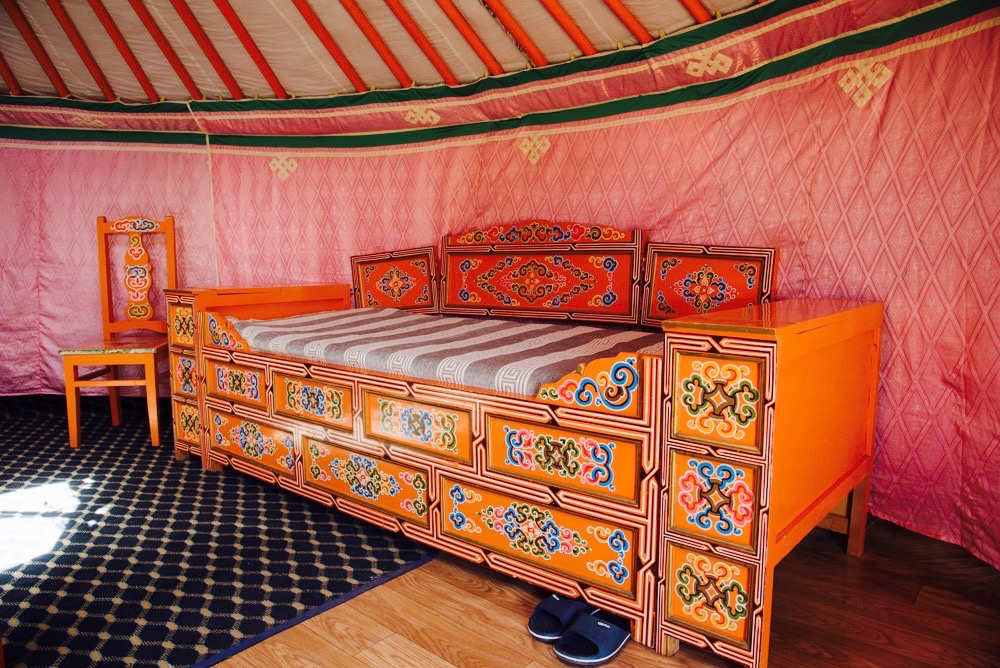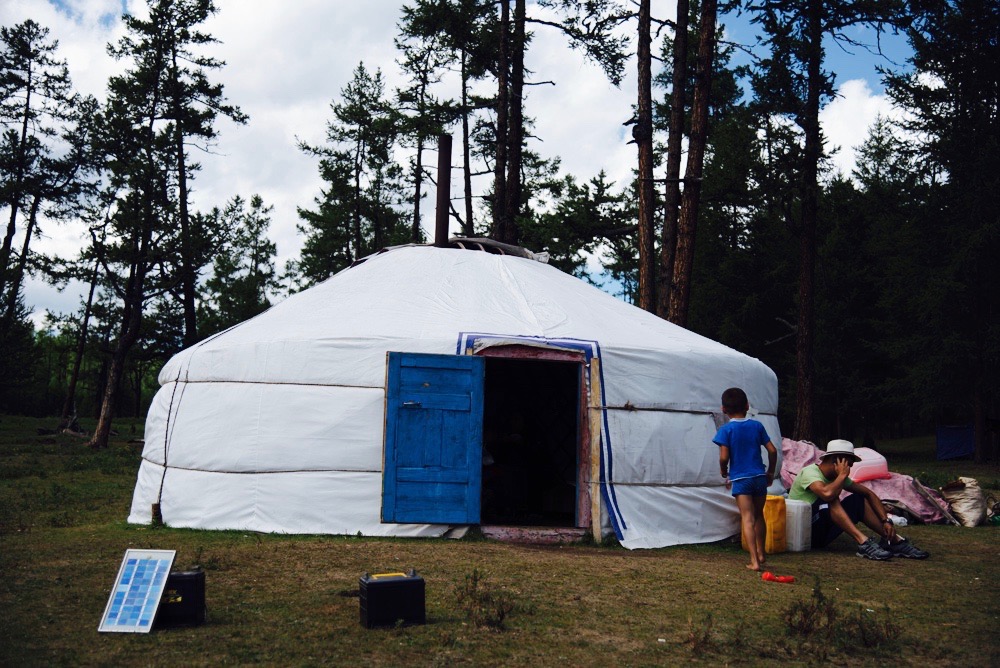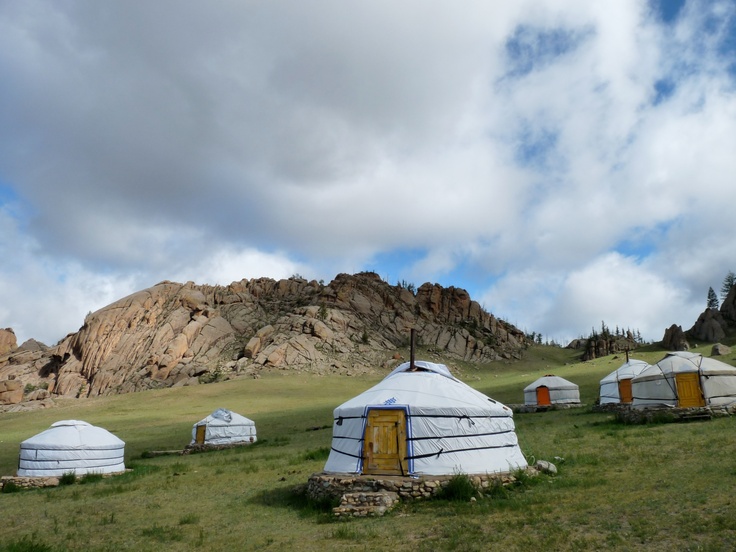Ger (aka Yurt) has been a reliable accommodation of the nomads of Central Asia for the last three thousand years. Surprisingly, due to its unique characteristics, ger is still used by Mongolian nomads nowadays. As nomadic lifestyle is largely dependent on weather and their livestock, nomads move several times in a year in search for better pasture. Generally, nomads move to different campsites in every season; however, under harsh weather circumstances or low feedstock availability, they can move more than 4 times a year. In this constant moving lifestyle, ger is an ideal accommodation suited for nomadic lifestyle.

Ger is a round structure of walls, poles and peaked roof covered with felt and canvas, and tightened with ropes, made by animal hair or wool. It is portable, easily assembled and disassembled, and most natural dwelling in the world. The structure of ger is the same across the country, including a wooden frame painted and decorated with traditional ornamentation, covers made out of white felt and canvas, ropes of animal hair, flooring and carpets of hand-sewn felt, and furniture. Most of the ger materials are made by animal wool and tail. For example, the main felt cover is from sheep wool, ropes are made by camel or sheep wool, or horse and yak tail and of course wood.

The Turkish word for ger is yurt, which means homeland in Turkish. When the dwelling made its way to Mongolia, it adopted the name ger which means home in Mongolian. Ger is always set up with the door facing to the south and tend to have an altar across from the door whether the inhabitants were Buddhist or shamanist. Historically, the floors were dirt, but richer families were able to cover the floors with felt rugs. Nowadays, most of the families will use wooden floor during colder season.
The dry and flat steppes and plains of Mongolia are known for its extreme weather. As there are no trees and shrubs to shelter from the wind, steppes are windy for most of the year with spring winds blowing up to 9 km per hour. Steppes also have big temperature range from about 40 Celsius in summer to -30 Celsius in winter. Gers are ideally suited for this harsh weather of the Mongolian steppe. To begin with, in order to stand the wind, the door has to be very strong. Ger doors are built strongly with wood and a wooden frame. The sloping aerodynamic shape of the roof also means winds are unlikely to tear off the roof beams. Most importantly, the circular shape of gers allows them to be quickly and efficiently heated and cooled. Last but not least, the toono or crown opening, ensures fresh air is continually circulated. Stove in the ger provides heat evenly, and extra layers of felt can further insulate it against harsh winter of the steppe.
Interesting traditions about gers include that the altar space usually serves as the traditional seating area for elders or respected leaders. Ger’s western half is considered the male part of the dwelling, while the eastern is where women lives and works.
In 2013, the traditional craftsmanship of the Mongolian Ger and its associated customs was recognized as part of our Intangible Cultural Heritage by UNESCO.
When you are on an Altai Nomadic tour across Mongolia, you will most likely stay several nights in Mongolian traditional yurt! If you wish to live like a Mongol nomads, choose from one of our authentic nomadic family stay tours:
http://www.budgettoursmongolia.com/mongolian-jeep-adventure-tours
http://www.budgettoursmongolia.com/horseback-riding-tours



 Anar
Anar 